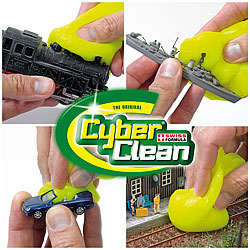There are a number of different options for attaching figures such as a horse and rider to a layout. Perhaps the...
No products
Product successfully added to your shopping cart
There are 0 items in your cart. There is 1 item in your cart.
Search Tips
How can I easily remove dust and dirt from a layout?
Unfortunately, one of the unwanted side effects of modelling is that sometimes our creations can serve as very effective dust and debris traps, or a ready-made metropolis for household spiders. In short, they are very effective at collecting dirt and accumulated debris. Removal of said debris is a perennial problem for most modellers as it is also just as likely that self-inflicted damage may occur in the case of over-vigorous cleaning.
There are a number of options available to modellers that should minimise cleaning-related damage. Careful use of a hobby brush (either damp or dry) can be an effective means of debris removal and is a favoured option for many modellers. Although a useful technique, it might not be the most effective at removing deeply ingrained dirt or dust. Some modellers use aerosol can air dusters which are reasonably cheap and readily available from hardware and provision stores or via the internet. Similarly, airbrush users can use a two-stage airbrush to deliver air to a model. The advantage of using an airbrush is that the user will have some degree of control over the strength of the airflow applied.
Some hobby manufacturers have taken a more direct approach and produced a physical medium that is directly applied to the model to remove dust and grime. Both 'Dust Dabber' by Woodland Scenics and 'Cyber Clean' by Busch work in this way. Both products use a solid sponge-like material that is dabbed onto the model or layout that attracts surface dirt and grime. In both cases, the sticky surface of the material removes deposits from the model but does not leave any residue behind, meaning that with care they can be used on painted surfaces and delicate parts.
Click here to receive the tips weekly in your mailbox. You can unsubscribe at any time.










